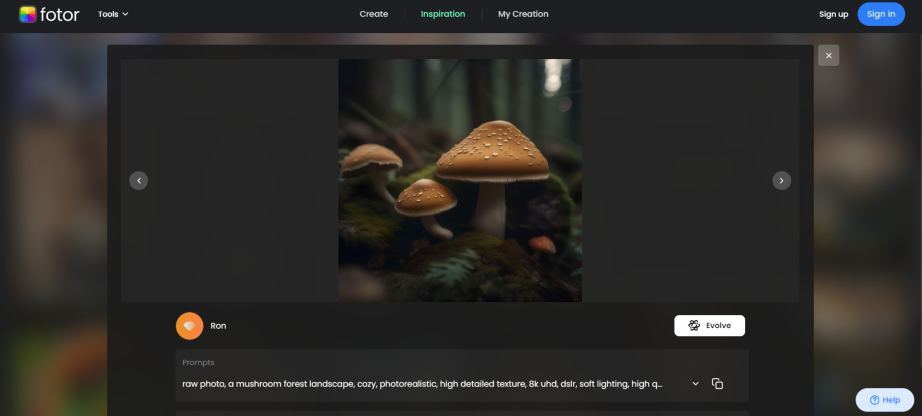AI-Generated Images: Revolutionizing Learning and Educational Engagement
The advent of advanced AI systems that can generate realistic images from text prompts has opened new possibilities for enhancing learning experiences. These AI image generators, trained on massive datasets, can instantly produce custom visual illustrations to accompany educational content.
For example, a biology textbook chapter on plant anatomy can be supplemented with AI-generated diagrams of leaf venation patterns, root structures, flower parts, and other botanical elements described in the text.
Beyond static images, there is potential to create animated videos depicting complex processes like photosynthesis, the water cycle, or moon phases. Although further development is needed, AI image generation holds promise as a versatile visual aid that makes abstract concepts more accessible and memorable for students.
With the capacity to turn any textual description into a detailed picture, AI-generated images could enrich traditional teaching methods with dynamic visuals tailored to curriculum topics and individual learning needs.
The Advantages of AI-Generated Images in Learning
One major benefit of AI-Generated Images is the ability to personalize learning material to match students’ individual needs and preferences. For visual learners, teachers can use AI to swiftly produce diagrams, charts, and illustrations that bring textbook concepts to life.
These visual aids can be tailored to focus on elements that resonate with how each student best absorbs information. Additionally, the speed at which advanced AI systems can generate new images and animations keeps pace with the rapid evolution of knowledge across academic fields.
Without AI, creating custom visuals is often slow and labor-intensive. This technology saves teachers time while enabling them to cover the latest discoveries and theories with supporting media.
Furthermore, the applications span all subjects and a wide range of visual content types – from architecture sketches of ancient ruins in history class, to storyboards breaking down calculus principles, to molecular models of organic chemistry reactions.
AI promises to make every student’s learning journey more engaging and effective by providing a personalized gallery of visualizations for any concept.
The Process of Generating Images with AI
The foundation of AI image generation is the ability to create pictures from text descriptions. Users simply input any prompt into the text box of AI software, like “a diagram showing photosynthesis” or “a plot graph for rising ocean temperatures.” After processing the text, the AI will produce a custom image matching the request.
Many AI tools also let users refine the initial generation with editing features to alter details, colors, shapes, etc. This allows for iterative improvements until the image sufficiently depicts the desired concept. Beyond basic imagery, some advanced AI systems can mimic distinct visual styles.
For educational publishers, this opens new possibilities for maintaining a consistent look and feel. For example, history textbook illustrations could mirror classical painting techniques, while anatomy diagrams replicate the minimalist style of medical journals.
Emulating established visual designs ensures consistency across subject areas while still leveraging AI’s ability to generate countless images tailored to cover novel educational content. With the right prompts and edits, AI tools provide flexibility in customizing AI-generated images to match both topical needs and visual aesthetics for diverse learning materials.
Ethical and Practical Considerations
While AI image generation holds promise, there are ethical concerns regarding proper usage and copyrights that must be addressed. Since AIs pull from vast datasets to create new visuals, there are open questions around ownership and plagiarism. Educators in particular should transparently reference any images produced by AI rather than claiming full authorship themselves.
Additionally, responsibility falls upon content creators to prompt AI in ways that combat historical bias rooted in the underlying training data. However harmless the intent, generating AI-generated images comes with a duty to prevent perpetuating problematic societal stereotypes and assumptions. Beyond ethics, the accuracy of AI visuals relies heavily upon human oversight and refinement. While advanced in many respects, current image generators still make mistakes in properly selecting and presenting content free from glitches or logical errors.
Before utilizing AI-produced media for instructional purposes, thorough reviews are necessary to double check elements like correctness of molecular diagrams, mathematical visualizations, labeling of geographic maps, historical depictions, and more. With ethical and pragmatic mindfulness guiding usage, AI promises an efficient way to engage students through Visuals tailored for modern educational settings.
Wrap Up
In closing, AI image generation stands poised to redefine visual learning by unlocking new levels of customization and efficiency. Students could benefit from AIs that provide tailored visual aids spanning everything from personalized biology diagrams to interactive math storyboards. However, as with any new technology, the prudent course involves tempered enthusiasm balanced with ethics and oversight.
Educators should utilize these tools as aids while retaining responsibility for direction, accuracy, and addressing potential biases. If embraced judiciously, AI promises to accelerate the refinement of visuals that captivate young minds. This marks an opportunity to nurture our creative energies toward images that inspire rather than misguide. By blending human wisdom with AI capabilities, a brighter future for visual education awaits.


